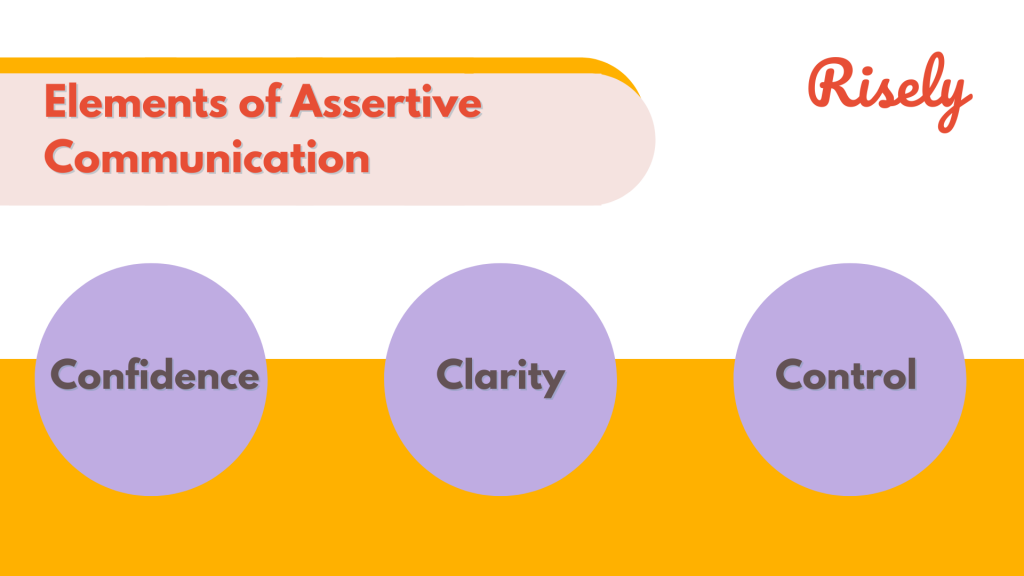Assertive Communication for Managers: 5 Hacks to Master the Skill
A manager’s communication skills can make or break the success of an organization. From leading others and making crucial decisions to building effective teams, managers play a vital role in the success of an organization. Managing people, delivering feedback, and developing team members are some of the fundamental management tasks managers need to complete successfully for an organization to thrive. According to management gurus, the assertive communication skills of a manager are essential in fostering a culture of open communication and mutual respect within a team. Unfortunately, though many employees seek out their leadership for guidance, there is often a lack of clarity surrounding assertiveness as a management strategy in the work environment. In this blog, we’ll explore what assertive communication is and why managers need to communicate assertively. We will also look at some of its unique applications and mistakes individuals can make while practicing it.- Assertive Communication for Managers: 5 Hacks to Master the Skill
- What is assertive communication?
- What are the assertive communication styles?
- What are the 3 Cs of assertiveness? Principles of Assertive Communication
- Assertive vs. Aggressive communication
- Why is assertive communication an effective strategy for managers?
- Mistakes to avoid in assertive communication
- How to develop assertive communication skills?
- Free assertive communication assessment for managers
- Conclusion
- Other Related Blogs
What is assertive communication?
Assertive communication is a style of communication that involves setting boundaries, owning your feelings, and being clear and concise with your messages. It’s about being respectful and honest in your communication rather than trying to be aggressive or passive-aggressive. While assertive communication can be seen as lacking sympathy toward others and missing out on many perspectives, empathy is the key principle of assertive communication. It involves understanding another person’s perspective and considering that while writing or speaking. Another important principle of assertive communication is clarity and fairness. It consists in being open and direct when communicating, ensuring others understand your point of view clearly and unambiguously. Essentially, assertive communication is about setting boundaries and standing by them. It involves discussing issues directly rather than ignoring or avoiding them.Assertiveness at work for managers
Managers and leaders are often in the position to direct operations. But, as the pivotal points of their teams, these professionals can find themselves unfairly taking up the burden of their entire teams. Managers who lack assertiveness frequently do fire fighting jobs within their teams and miss out on building productivity. They fail to be clear about plans and might leave the team confused, too, as the team members cannot have faith in a leader who appears unsure of their objectives and actions. In such cases, the managers cannot guide others and build trust in teams – leaving the idea of becoming an influential leader behind. Assertiveness is needed in managers at work to put clarity and cohesion into their teams. Managers must be assertive at work to be distinguished leaders and motivators. Assertiveness is a personality trait that involves being confident, clear, and direct when dealing with others. It helps them become credible leaders and hold others accountable.Examples of assertive communication
A manager notices that one of her team members is consistently missing deadlines for essential projects. So she schedules a one-on-one meeting with the team member to discuss the issue. During the meeting, the manager uses assertive communication by clearly stating the problem (missing deadlines) and expressing her concerns directly but respectfully. She also actively listens to the team member’s perspectives and acknowledges any valid points they raise. The manager then sets clear expectations for the future by outlining the consequences of continued missed deadlines and agreeing on a plan of action to ensure they are met. She ends the meeting by reiterating her confidence in the team member’s ability to meet the expectations and her willingness to support them in doing so. This example shows the manager using assertive communication to address a problem in a direct, respectful, and solution-focused way.What are the assertive communication styles?
Assertive communication typically centers around the following elements of communication:- Confrontation: It is used when a person openly and explicitly confronts another person or issue. This style is often used for assertiveness when someone feels they have been wronged, leading to anger and argumentation.
- Negotiation: It involves using persuasion techniques and logic to reach an agreement with someone else. It consists in taking time for deliberation, trying different approaches until one gets a response, then proceeding from there based on what was agreed upon rather than imposing one’s will immediately.
- Influence: It uses social proof looking to others for guidance and inspiration, and emotional appeal to change or persuade someone. It often involves a personal connection and the use of persuasive language.
- Disclosure: It happens when someone shares something unique about themselves without expecting anything in return. Managers can use it to build trust with their teams, show vulnerability, and gain support from the other person.
- Feedback: The feedback style of communication gives constructive criticism that aims at helping the individual improve their skills AND meets the individual’s needs on a personal level. Constructive feedback comes from a place of authority and the ability to provide support.
What are the 3 Cs of assertiveness? Principles of Assertive Communication
Assertiveness is a skill that can be learned and improved over time. It involves assertive communication to voice your opinions, ask questions, and constructively express your feelings. The three Cs of assertiveness are confidence, clarity, and control. These are essential in assertive communication, as they help you express yourself while respecting other people’s needs and boundaries. Assertive communication involves using all three of these Cs to achieve your goals.Confidence
Assertive communication starts with confidence. When you are confident in what you want and how you want to do it, others will respect your ideas. An assertive communicator is comfortable in putting their ideas in front of an audience which can raise questions and even straight up reject them. In addition, you should feel comfortable speaking up when something is not going according to plan or when you have a different opinion from someone else. In addition to measured use of language, confidence is added to communication with the help of solid nonverbal communication, such as maintaining eye contact and speaking at a good pace.Clarity
The second key element of assertive communication is clarity. Assertive communication puts clear messages with the help of language and other tools. It avoids vague notions and terms, which can leave the receiver confused. On the other hand, assertive communication shows clarity of ideas in the speaker and lends it to the other party.Control
The final key element of assertive communication is controlling your emotions. It means that you always remain in charge of your thoughts and feelings. When you can do this, it makes it easier for others to understand what you’re trying to say, even if they disagree. Controlled behavior also shows that the speaker respects their listener and desires a constructive dialogue rather than confrontation.
Assertive vs. Aggressive communication
Assertive communication is a style of communication that involves expressing your feelings and needs positively and constructively. It is often compared to aggressive, more direct, and confrontational communication. Assertive communication believes in respecting both parties’ opinions and allowing each to get space for their concerns. Aggressive communication lacks this mutual exchange and instead relies merely on putting one’s needs forward. Assertive communication is a type of communication that requires individuals to speak clearly and firmly without aggression or threats. Assertive communication can build relationships with others and address workplace issues. Managers can achieve this by identifying and understanding one’s feelings and listening to the other person without judgment. Assertive communication seeks to build trust and respect between the two parties, while aggressive communication can destroy faith and lead to conflict. Check out “Assertiveness vs. Aggressiveness: How to be an effective leader?“Other Interesting Reads
Why is assertive communication an effective strategy for managers?
Assertive communication is a proactive approach to problem-solving that involves setting boundaries, communicating effectively with others, and enforcing mutual respect and accountability. It helps overcome misunderstandings and build trust between individuals by ensuring that everyone has an opportunity to voice their opinions and perspectives without feeling dismissed or misunderstood. Assertive communication is also essential for managers striving to be successful in their roles because it helps foster a climate of openness and honesty among colleagues. By embracing assertiveness in their daily interactions, managers can foster a positive work environment where every voice is heard, opinions are valued, and mistakes are acknowledged and rectified. In totality, assertive communication sets effective leaders apart from other team managers. They are sure of their ideas and plans and communicate effectively to keep their team moving in a cohesive direction.Assertiveness in leadership
Assertive communication is a style of communication that focuses on getting the message across clearly and directly concerning the listener’s needs and concerns. Leaders often use it to assert their authority and resolve conflicts constructively and diplomatically. Leaders who opt for an assertive communication style build effective teams as they can infuse the atmosphere with confidence and clarity, along with controlling the direction in which the team is headed. In totality, assertive communication is an essential skill in good leadership.When should a manager use Assertive Communication? Let’s look at some scenarios
- Setting Expectations: When a manager needs to clarify expectations, assign tasks, or define goals for team members, assertive communication helps ensure that everyone understands what is required without being overly aggressive or passive.
- Giving Feedback: Providing constructive feedback is a critical aspect of a manager’s role. Assertive communication allows managers to deliver feedback in a clear, respectful, and straightforward manner, focusing on specific behaviors or performance issues.
- Conflict Resolution: When conflicts arise within the team or between team members, assertive communication helps managers address the issues directly, express their concerns, and facilitate open discussions to find mutually agreeable solutions.
- Expressing Concerns: Managers should use assertive communication when they have concerns about team performance, project timelines, or any aspect of the work environment. It enables them to voice their worries professionally and proactively.
- Find more here: 15+ Assertive Communication Examples and Scenarios for Smart Managers
Mistakes to avoid in assertive communication
Assertive communication is a strategy that is used to communicate effectively with others. It involves communicating honestly and clearly without resorting to threats or aggressive behavior. When assertive communication is appropriately used, it can be effective in building rapport, achieving goals, and improving relationships. However, assertive communication is not always effective. There are inevitable mistakes that managers commonly make when using assertive communication. Some common errors in assertive communication that you should avoid are:- Not listening to others
- Acting hostile
- Not focusing on body language
- Becoming emotional
- Not expressing vulnerability at all
How to develop assertive communication skills?
There is no one-size-fits-all answer to this question, as it will vary depending on your personality and situation. However, some tips that may help you develop assertive communication skills include:Control your emotions, and let logic lead
Becoming more aware of your emotions is essential to effective assertive communication. It is crucial to identify when you are starting to become emotional and take a step back to regain composure. Assertive communication requires managers to take care of their emotions and offer a well-thought and rational response – even when situations go awry.Focus on what others are saying
Learning to listen attentively is also critical to becoming an excellent assertive communicator. When you listen attentively, you are taking time to understand the other party, which eventually helps you frame a good response. Being assertive is often conflated with overconfidence due to errors, but it does not stand for not listening to the other party at all! Check out “Assertive Communication Training For Managers In 5 Clear Steps“Put confidence in your ideas
When you are assertive, it is vital to be sure of your position. However, this does not mean you should come across as arrogant or presumptuous. Instead, ensure that your assertiveness is backed by solid logic and fact-based information. An excellent way to do this is to research the topic before offering a suggestion or opinion – even if it’s something that you think others will want to hear.Become a well-rounded communicator
Being assertive requires good verbal communication skills and involves a whole deal of body language and nonverbal communication. In addition to putting across ideas clearly and concisely using straightforward language, managers need to adopt the appropriate body language and gestures to complement the message.Identify your boundaries
A good assertive communication style also involves setting boundaries. For example, when you feel someone pushing too hard or going against your wishes, it’s important to be assertive and limit the interaction. This way, you can preserve your emotional state as well as ensure that all interactions are practical and beneficial for both parties involved.Free assertive communication assessment for managers
Are your assertive communication skills ready to make you an impeccable leader? Check now for free with Risely’s assertive communication assessment for managers. The free assertive communication assessment for managers sheds light on your assertive communication skills – highlights what makes you stand apart and what holds you back as you lead your day with your team. In addition to pointing out the areas that need work, the free assertive communication assessment for managers also lays roots for a learning journey to overcome all your people management problems. To start winning with your team today, get started with Risely. Risely is every manager’s buddy in overcoming people management challenges in their teams. Along with assertive communication, Risely helps leaders develop essential leadership skills critical to combating the typical issues that hold back teams. So if you find yourself fighting many fires or internal conflicts, stay rife in your team – sign up for Risely today for free! Check out more resources here: Assertive Communication Training For Managers In 5 Clear StepsConclusion
It is proven that assertive communication skills empower people to express their feelings and needs in a healthy and effective way. By learning how to listen assertively, you can help others feel understood and respected. This can create a more trusting environment at work, which will help you build stronger relationships and foster more effective communication. However, first, you need to become a better listener. If you aren’t satisfied with your current listening skills, this self-assessment could help. The knowledge is yours!How assertive is your communication?
Test your assertive communication skills now for free with a self-assessment for managers
Other Related Blogs
Assertive Feedback Techniques ft. Gurleen Baruah
Assertive Feedback Techniques ft. Gurleen Baruah Let’s be real—giving feedback as a manager isn’t always easy. Say too little, and nothing changes. Say too much, and it might come off…
Assertive Conflict Resolution Techniques | Brenda Hooper
Assertive Conflict Resolution Techniques | Brenda Hooper Can assertive communication help you out in resolving conflicts? In this podcast conversation, we have Brenda Hooper, an experienced executive coach joining us…
The Best Assertiveness Coaches To Transform The Way You Interact
The Best Assertiveness Coaches To Transform The Way You Interact Effective communication is paramount in the dynamic world of business and leadership. Yet, finding the balance between being passive and…
Using Body Language in Training: 5 Hacks
Using Body Language in Training: 5 Hacks In today’s fast-paced world, effective communication is more important than ever. And one often overlooked aspect of communication is body language. In this…


